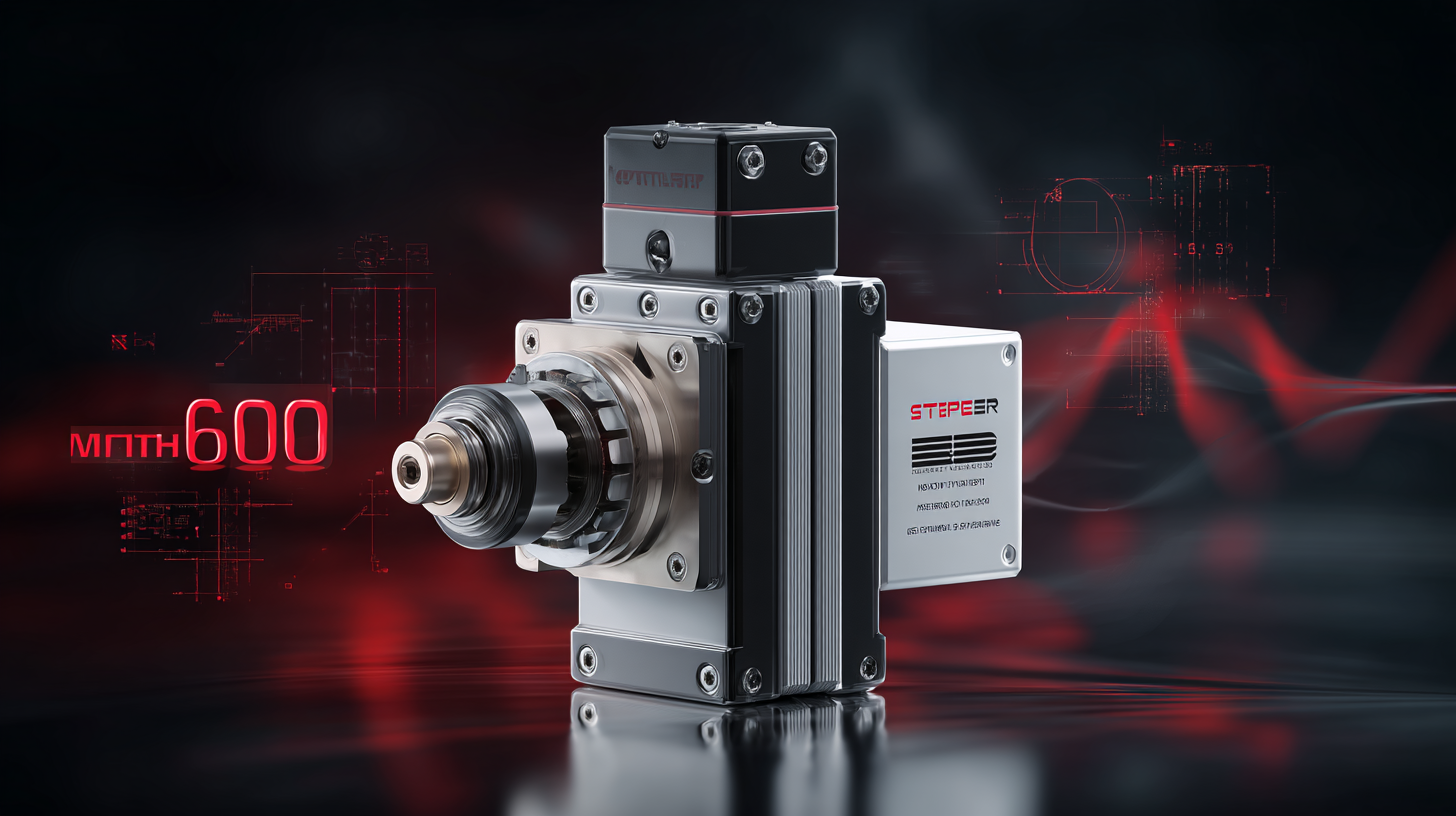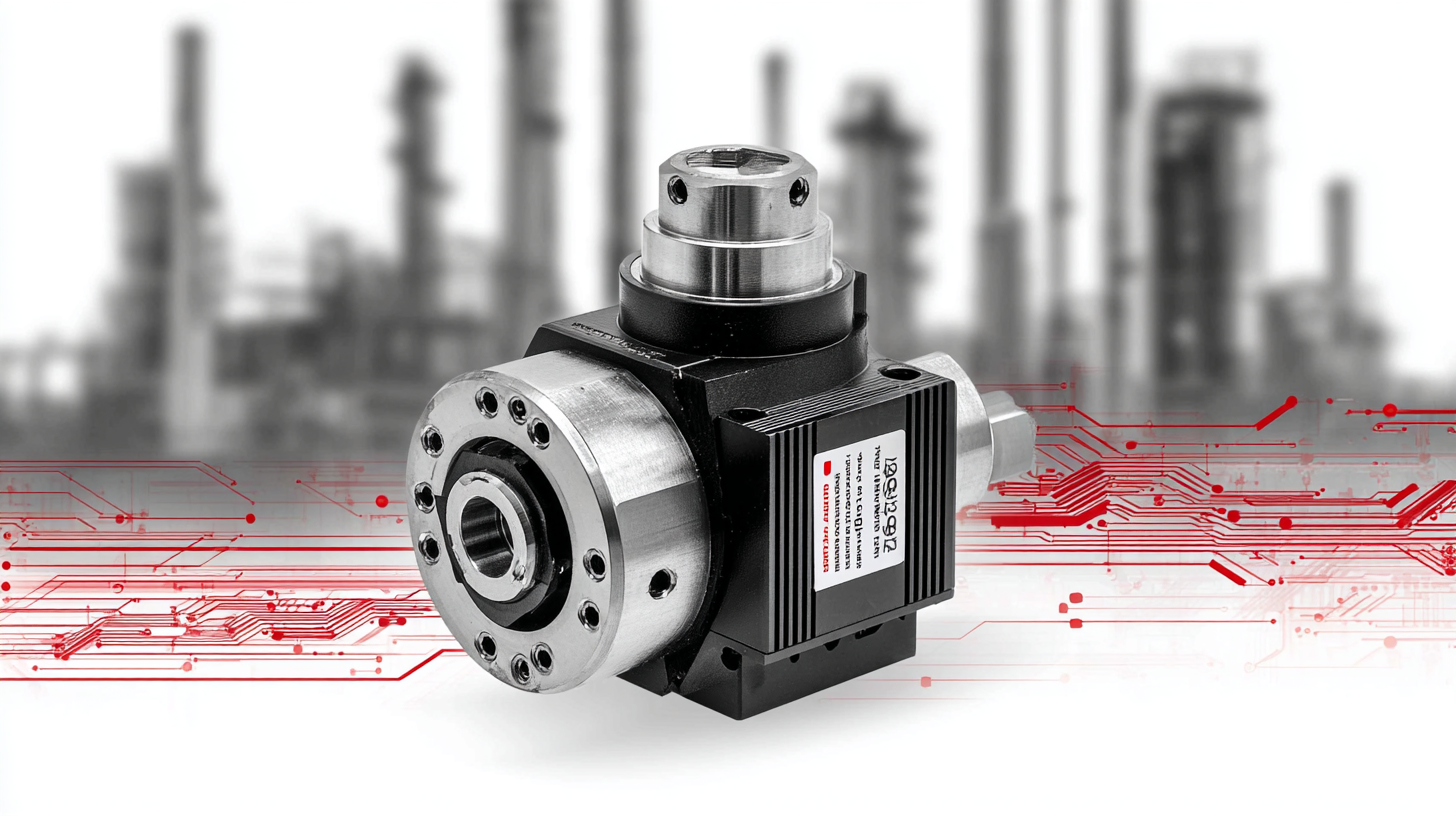
-
Home
-
Products
-
Application
-
Documents
-
News
-
Blog
-
Blog
-
Sinsegye
Leave Your Message
-
Wechat OA

-
 Baijia Hao
Baijia Hao



 Baijia Hao
Baijia Hao

In today's rapidly evolving industrial landscape, the demand for precision and efficiency has never been greater, making the selection of the right components crucial for success. A key player in this arena is the stepper motor, known for its ability to provide highly accurate motion control in various applications, from robotics to manufacturing automation. According to a recent report by Markets and Markets, the global stepper motor market is projected to reach $5.86 billion by 2025, driven by advancements in technology and the increasing need for energy-efficient solutions. In the wake of these trends, China has emerged as a leading manufacturer of stepper motors, demonstrating a commitment to quality and innovation.

As we delve into the best stepper motors available for your industry, we explore how these components can unlock new levels of efficiency while ensuring reliability and trust, aligning with the ethos of "Made in China, Shared Globally."
Stepper motors are essential components in various industries, offering unmatched precision and control over motion. The primary types of stepper motors include permanent magnet, variable reluctance, and hybrid stepper motors.
Permanent magnet stepper motors utilize magnets to achieve accurate positioning, making them ideal for applications needing a high degree of precision at lower speeds. In contrast, variable reluctance motors tend to have quicker response times and are often used in high-speed applications, although they may offer less torque compared to their magnet counterparts.
Hybrid stepper motors combine the features of both permanent magnet and variable reluctance motors, providing a balance of speed and torque. Their advanced design allows for smoother operation and better resolution, making them suitable for intricate applications in robotics, CNC machinery, and 3D printing.
When selecting a stepper motor, it’s crucial to understand factors such as torque requirements, operating speed, and control mechanisms to ensure compatibility with your specific industrial needs. By leveraging the unique features of these motors, you can significantly enhance operational efficiency and output precision in your projects.
Stepper motors are pivotal in enhancing automation across various industries, offering unparalleled precision and efficiency. Their ability to control movement in discrete steps makes them ideal for applications such as 3D printing, robotics, and CNC machining. Unlike traditional motors, stepper motors can maintain torque at low speeds, allowing for excellent performance in tasks requiring meticulous positioning and speed control.
When choosing stepper motors for industrial applications, keep the following tips in mind: consider the torque requirements of your specific application to ensure optimal performance. Additionally, pay attention to the voltage ratings; using the correct voltage will enhance efficiency and prolong the lifespan of the motors. Finally, be mindful of the step angle - a smaller step angle yields higher precision, which is crucial for applications demanding accurate motion control.
The integration of stepper motors in automation systems leads to improved productivity and reduced operational costs. By leveraging their capabilities, industries can streamline processes and enhance the quality of their products. As the market for these motors continues to grow, understanding their advantages and applications will be essential for companies looking to innovate and stay competitive.
In the manufacturing sector, precision and accuracy are paramount for maintaining competitive advantage and ensuring product quality. Stepper motors, known for their ability to divide a full rotation into a large number of steps, have become integral to achieving these objectives. According to a report from Research and Markets, the global stepper motor market is projected to reach $3.57 billion by 2025, driven by the increasing demand for automation and control systems in manufacturing processes. This surge emphasizes the crucial role that stepper motors play in enhancing operational efficiency.

The impact of stepper motors on manufacturing can be observed in various applications, from 3D printing to CNC machinery. A study conducted by the International Journal of Advanced Manufacturing Technology highlighted that using stepper motors can improve positioning accuracy by up to 0.1 mm, which is vital for tasks requiring high precision. Furthermore, their open-loop control mechanism allows for simplified system designs, reducing the likelihood of errors related to feedback systems. This reliability not only boosts productivity but also lowers costs associated with rework and material waste, ultimately contributing to a more sustainable manufacturing process.
When it comes to selecting the right stepper motor for your specific industry needs, understanding the distinct requirements of your application is paramount. Industries such as manufacturing, robotics, and telecommunications rely heavily on stepper motors for precise control and repeatability. According to a report by Research and Markets, the global stepper motor market is projected to reach $5.8 billion by 2026, reflecting a CAGR of 3.5% from 2021. This growth underscores the increasing importance and application of stepper motors across various sectors.

In manufacturing, for instance, stepper motors are widely used in CNC machines and 3D printers, where accuracy is crucial. The choice of a stepper motor can affect both production speed and quality, making it vital to consider factors such as torque requirements, microstepping capabilities, and voltage ratings. A survey by Allied Market Research highlights that 30% of manufacturing firms prioritize energy efficiency in motor selection, thus indicating a shift towards more advanced stepper motor technologies that meet these demands. Ultimately, selecting the appropriate stepper motor tailored to your industry can significantly enhance operational efficiency and output precision.
In various industries, stepper motors have proven pivotal in enhancing operational efficiency and precision. One notable case can be observed in the automotive sector, where a leading manufacturer incorporated stepper motors in their assembly line automation. This implementation allowed for precise control over positioning and movement, significantly reducing assembly times and minimizing human error. The outcome was a more streamlined production process, enabling the company to increase output while maintaining high-quality standards.
Another compelling example comes from the medical device industry, where stepper motors are utilized in advanced imaging equipment. The precise motion control provided by these motors is essential for ensuring accurate imaging results, which directly impacts patient care. By integrating stepper motors into their systems, manufacturers have been able to enhance the reliability and performance of their devices, ultimately leading to better diagnostic capabilities and improved patient outcomes. These case studies illustrate how, across sectors, stepper motors not only boost efficiency but also contribute to innovation and excellence in various applications.